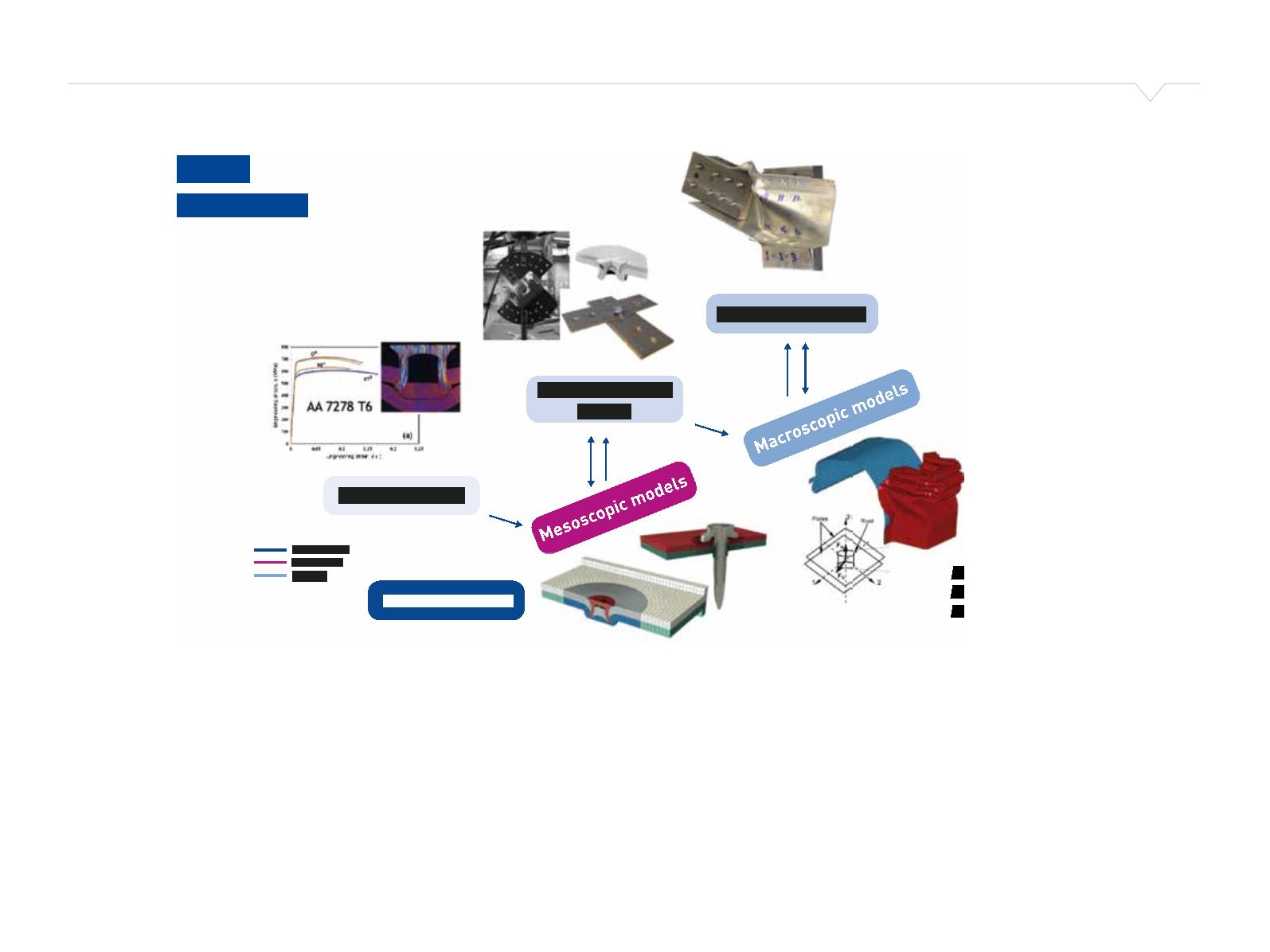

17
reSearch PrOGrammeS
The need for multi-material structures in the automotive,
offshore and physical security industries is becoming
increasingly important to meet the requirements in terms of
performance and weight reduction of their products. Often, the
behaviour of a structure is strongly linked to its connections
and their capacities to sustain and transfer the applied load to
its different members. In this perspective, the design of multi-
material structures has to be carried out taking into account
how the connections will behave and fail in the numerical
simulations used by the designers. Today, large shell elements
are used for computational efficiency which hampers an
accurate representation of the connections and their failure
modes due to a poor discretization of these complex problems.
The aim of this research programme is to provide macroscopic
models for multi-material connections which are based on
a fundamental understanding of the structural joints. These
models should be industry-friendly in terms of computational
time as well as calibration cost. Here multi-material
connections involve aluminium, steel and fibre reinforced
polymers.
We will meet this objective using a multi-scale testing and
modelling strategy, see Figure 7. This strategy involves testing
at different scales from the material within the connector,
through single connector tests, to the final component
level. Each of these testing levels is important to gain the
fundamental understanding of the connections of interest.
In terms of numerical modelling, mesoscopic models where
the connections are represented with solid elements will be
employed to increase the knowledge behind the behaviour and
failure of structural joints. However, macroscopic models are
the final outcome of the programme.
In 2015, a PhD project was started with John Fredrick
Berntsen. He will be working on the joining of fibre reinforced
polymers and aluminium alloys using structural bonding. His
PhD will involve static to dynamic testing and a strong focus
will be placed on industry friendly macroscopic models.
Two PhD projects (started in 2013 but relevant to SFI CASA)
were continued in 2015. Erik Grimsmo is working on bolted
connections in steel structures subjected to impact loading
conditions, whereas Johan Kolstø Sønstabø is working on
flow-drill screws connections in aluminium structures under
crash loading.
Structural Joints
Head of Programme: David Morin
Figure 7: Multiscale
testing and modelling
strategy.
Material testing
Calibration
Validation
Design
Material models
Component testing
Single connector
testing


















